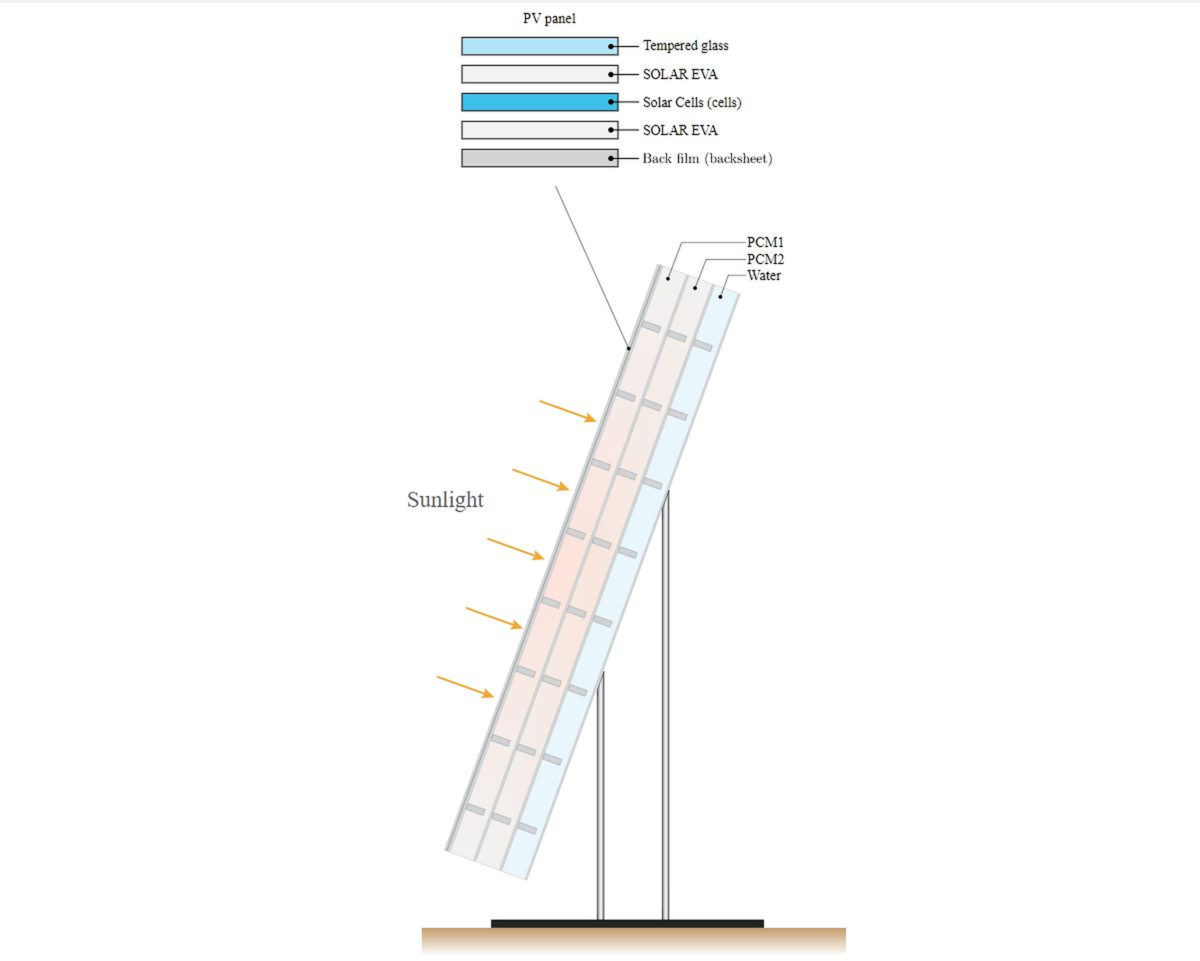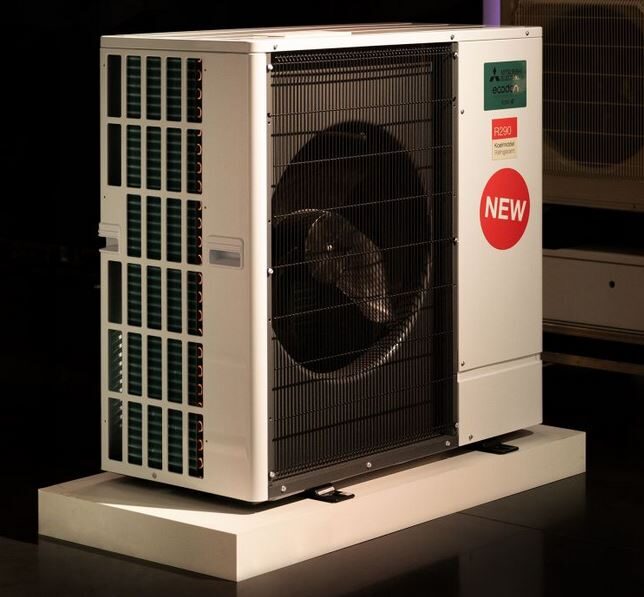A group of scientists in Iran has considered using a two-layer phase change material (PCM) as a passive cooling agent for a cooling system for photovoltaic panels. PCMs are able to absorb, store and release large amounts of latent heat over a defined temperature range and have often been used, at the research level, for PV module cooling.
“We have conducted the numerical study based on a commercial PV module, and proposed a cooling system using the benchmark studies in the literature, so we have not designed and implemented a pilot experimental setup yet,” the research's corresponding author, Mohammad Adib, told pv magazine. “We are now working with the Niroo Research Institute (NRI) to outline a roadmap for its commercial viability.”
The 2D numerical simulation considered a solar module-integrated two-layer PCM cooling unit that controls the panel temperature by absorbing its excess heat. A computational fluid dynamics (CFD) methodology was utilized to assess the performance of the integrated device in four different climate conditions in Iran. A Net Present Worth (NPW) technique was used to calculate the present value based on the interest rate, operating costs, and power yield of the system.
“Since the PCM cooling needs no significant maintenance and repair, operating costs can be safely neglected,” the researchers stated. “Therefore, only initial investment is considered for the economic analysis. The benefit results from selling the extra electrical energy produced by the PCM-integrated PV module compared with the no-PCM module. In addition, energy savings due to hot water storage has also been taken into account in benefit calculations.”
The system was assumed to be fabricated with four different organic PCMs – RT25HC, RT28HC, RT35HC, and RT44HC – which are all products of German PCM provider Rubitherm Technologies GmbH. Twelve different combinations of compartment thicknesses and PCM material were taken into account. A solar module JAP60S09-275/SC with a power output of 275W and a 16.7% efficiency from Chinese manufacturer JA Solar was chosen for the simulation.
The research group found that, at the current stage, the proposed cooling approach is not economically justifiable, due to the high initial costs of PCM materials. The payback period was demonstrated for different interest rates and was found to be of 26 years assuming a 10% interest rate.
The cooling technique was introduced in the paper Techno-economic assessment of a photovoltaic module integrated with a two-layer phase change material unit, published in the Journal of Energy Storage. The research group included scientists from the Niroo Research Institute (NRI), the University of Tehran, and the Amirkabir University of Technology in Iran. “The operational lifespan of PV modules is normally
20 years, but can be extended to 48 years by using a PCM cooling system,” they concluded.
This content is protected by copyright and may not be reused. If you want to cooperate with us and would like to reuse some of our content, please contact: editors@pv-magazine.com.




2 comments
By submitting this form you agree to pv magazine using your data for the purposes of publishing your comment.
Your personal data will only be disclosed or otherwise transmitted to third parties for the purposes of spam filtering or if this is necessary for technical maintenance of the website. Any other transfer to third parties will not take place unless this is justified on the basis of applicable data protection regulations or if pv magazine is legally obliged to do so.
You may revoke this consent at any time with effect for the future, in which case your personal data will be deleted immediately. Otherwise, your data will be deleted if pv magazine has processed your request or the purpose of data storage is fulfilled.
Further information on data privacy can be found in our Data Protection Policy.